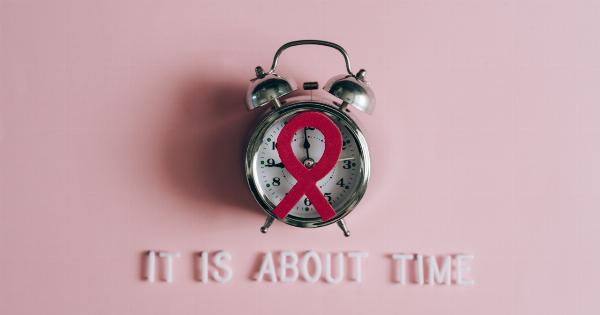World AIDS Day, observed on December 1st every year, serves as a global reminder to raise awareness about HIV (Human Immunodeficiency Virus) and AIDS (Acquired Immunodeficiency Syndrome).
This day aims not only to raise awareness but also to educate people about the virus, promote prevention measures, support those living with HIV, and commemorate those who have lost their lives to AIDS. It provides an opportunity for individuals and organizations to join forces in the fight against HIV/AIDS and work towards eradicating the disease altogether.
The Basics of HIV
HIV is a retrovirus that targets the immune system, specifically the CD4 cells (also known as T cells). The virus weakens the immune system over time, making individuals more susceptible to infections and diseases.
If left untreated, HIV can progress into AIDS, which is the final stage of the infection.
Transmission of HIV
HIV is primarily transmitted through the exchange of certain bodily fluids, including blood, semen, vaginal fluids, rectal secretions, and breast milk. The most common modes of transmission include:.
- Unprotected sexual intercourse with an infected person
- Sharing contaminated needles or syringes
- From an HIV-positive mother to her child during pregnancy, childbirth, or breastfeeding
It’s important to note that HIV cannot be transmitted through casual contact such as hugging, shaking hands, or sharing utensils.
Recognizing HIV Symptoms
Early-stage HIV infection may not display any noticeable symptoms or may present mild flu-like symptoms, which often go unnoticed or get mistaken for other common illnesses. However, as the infection progresses, symptoms may include:.
- Persistent fatigue and weakness
- Fever and night sweats
- Unexplained weight loss
- Recurring infections, such as thrush
- Swollen lymph nodes
- Digestive issues
Prevention Strategies
The most effective way to prevent HIV infection is to practice safe behaviors and adopt preventive measures. These strategies include:.
- Consistently using condoms during sexual activities
- Engaging in mutually monogamous relationships with a partner who is HIV-negative
- Avoiding sharing needles or any drug-injecting equipment
- Ensuring the use of sterilized and properly cleaned medical equipment
- Getting tested and knowing the HIV status of both partners before engaging in sexual activities
HIV Testing and Treatment
Testing for HIV is crucial, as early diagnosis leads to better outcomes and allows for timely treatment initiation. There are various testing methods available, including blood tests, oral fluid tests, and rapid HIV tests, which provide faster results.
Effective treatment options for HIV exist in the form of antiretroviral therapy (ART). ART involves a combination of medications that control the virus’s replication and help maintain the overall health of individuals living with HIV.
Adhering to ART consistently and correctly can lead to viral suppression, enabling people with HIV to live long, healthy lives and significantly reducing the risk of transmission.
Addressing Stigma and Discrimination
One of the major barriers in the fight against HIV/AIDS is the stigma and discrimination associated with the virus. People living with HIV often face prejudice, social exclusion, and loss of opportunities.
It is essential to combat stigma by promoting understanding, tolerance, and empathy. Education and awareness play a critical role in dispelling myths and misconceptions surrounding HIV/AIDS.
Raising HIV Awareness
Creating awareness and educating communities about HIV is vital to prevent new infections and provide support and care to those living with the virus.
Several initiatives and campaigns take place on World AIDS Day to educate the public about prevention strategies, testing facilities, and available resources for individuals affected by HIV/AIDS.
Community-based organizations, healthcare providers, and government agencies work together to organize events, distribute informative materials, and provide free testing and counseling services.
The goal is to empower individuals and communities with knowledge to make informed decisions, reduce the stigma around HIV/AIDS, and ultimately end the global epidemic.
The Importance of World AIDS Day
World AIDS Day serves as a reminder that HIV/AIDS is still a significant global public health issue. It highlights the need for continued efforts in terms of prevention, education, testing, treatment, and eradication of stigma.
The day is an opportunity for everyone to stand in unity against HIV/AIDS, supporting those affected, and striving for a world without new HIV infections or AIDS-related deaths.























